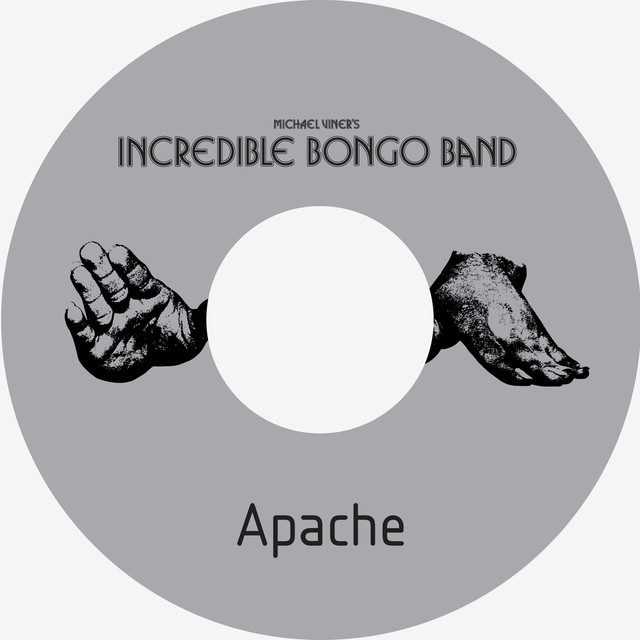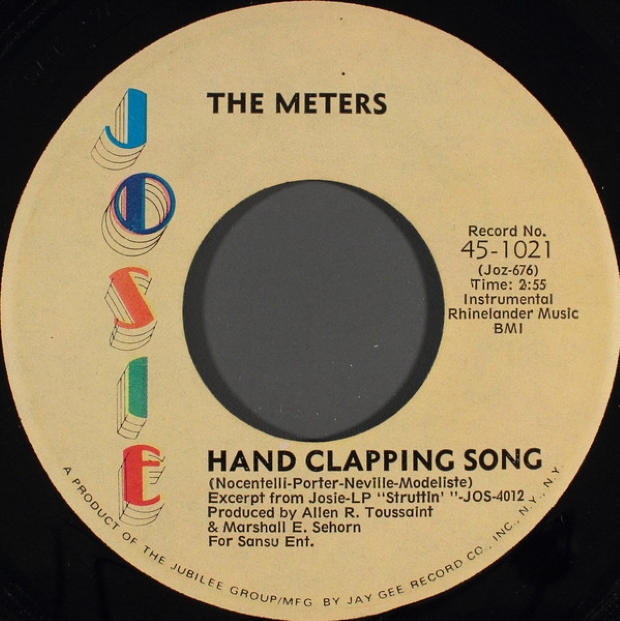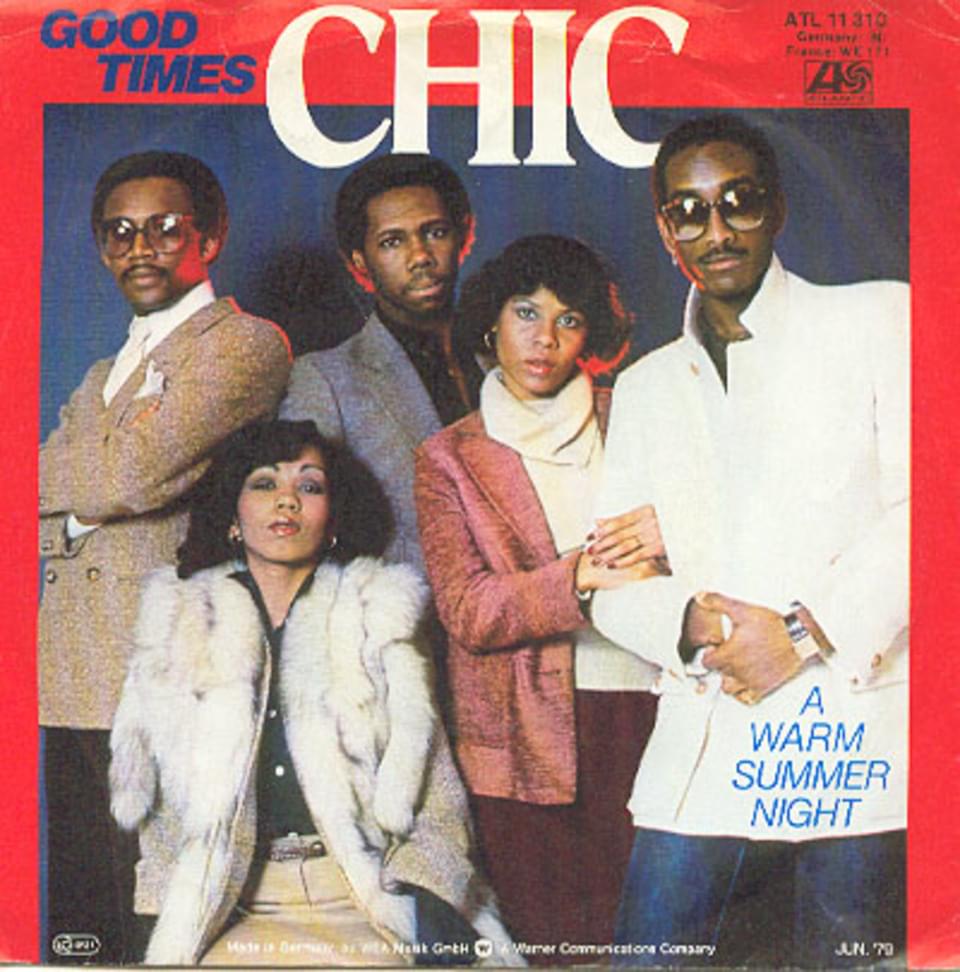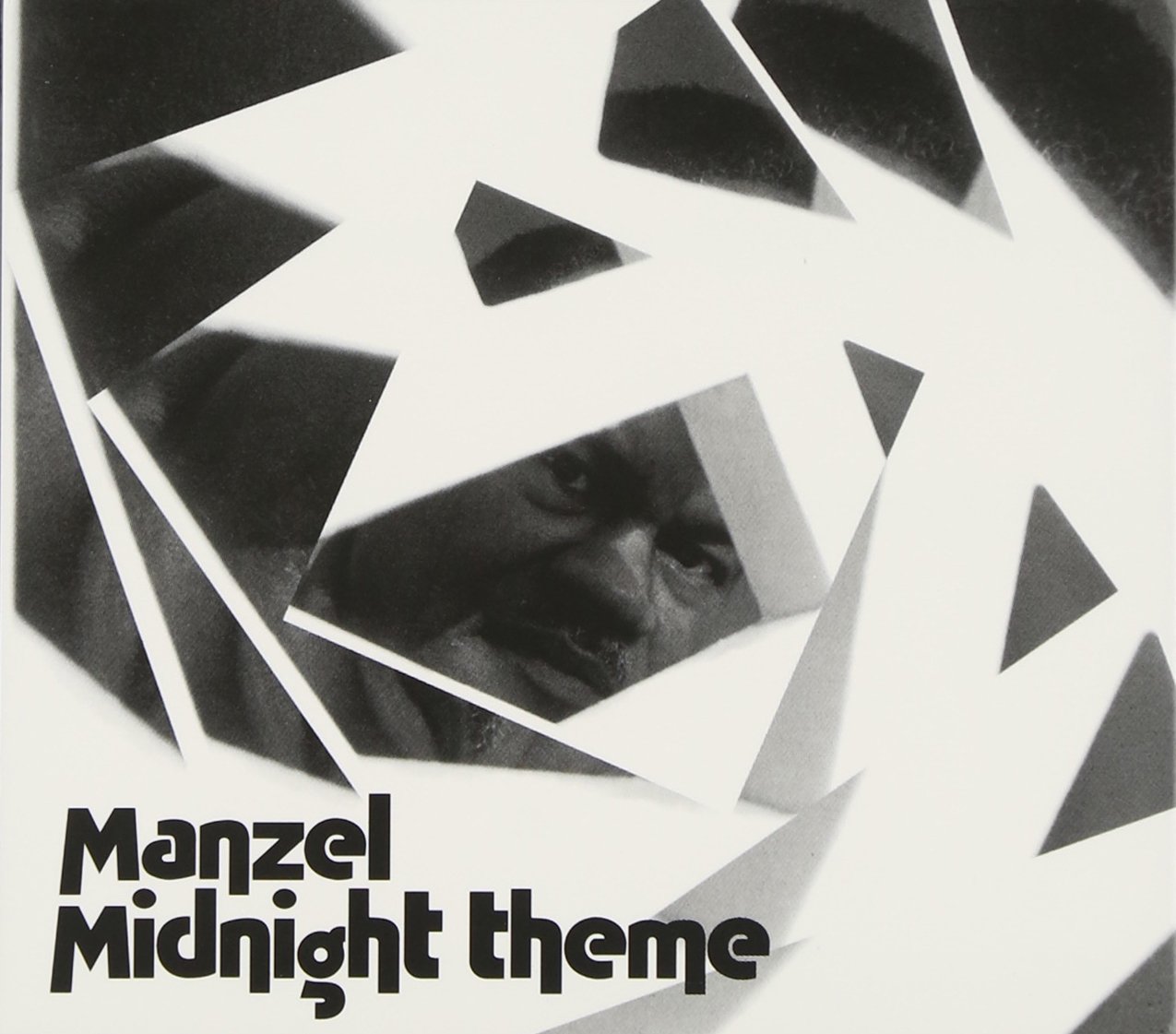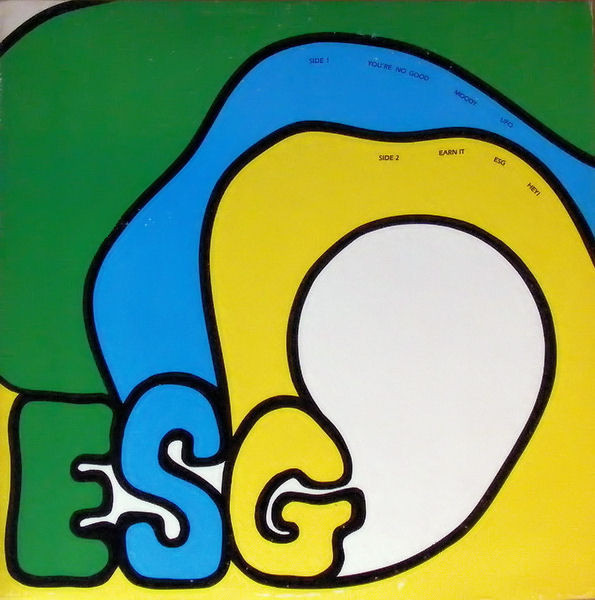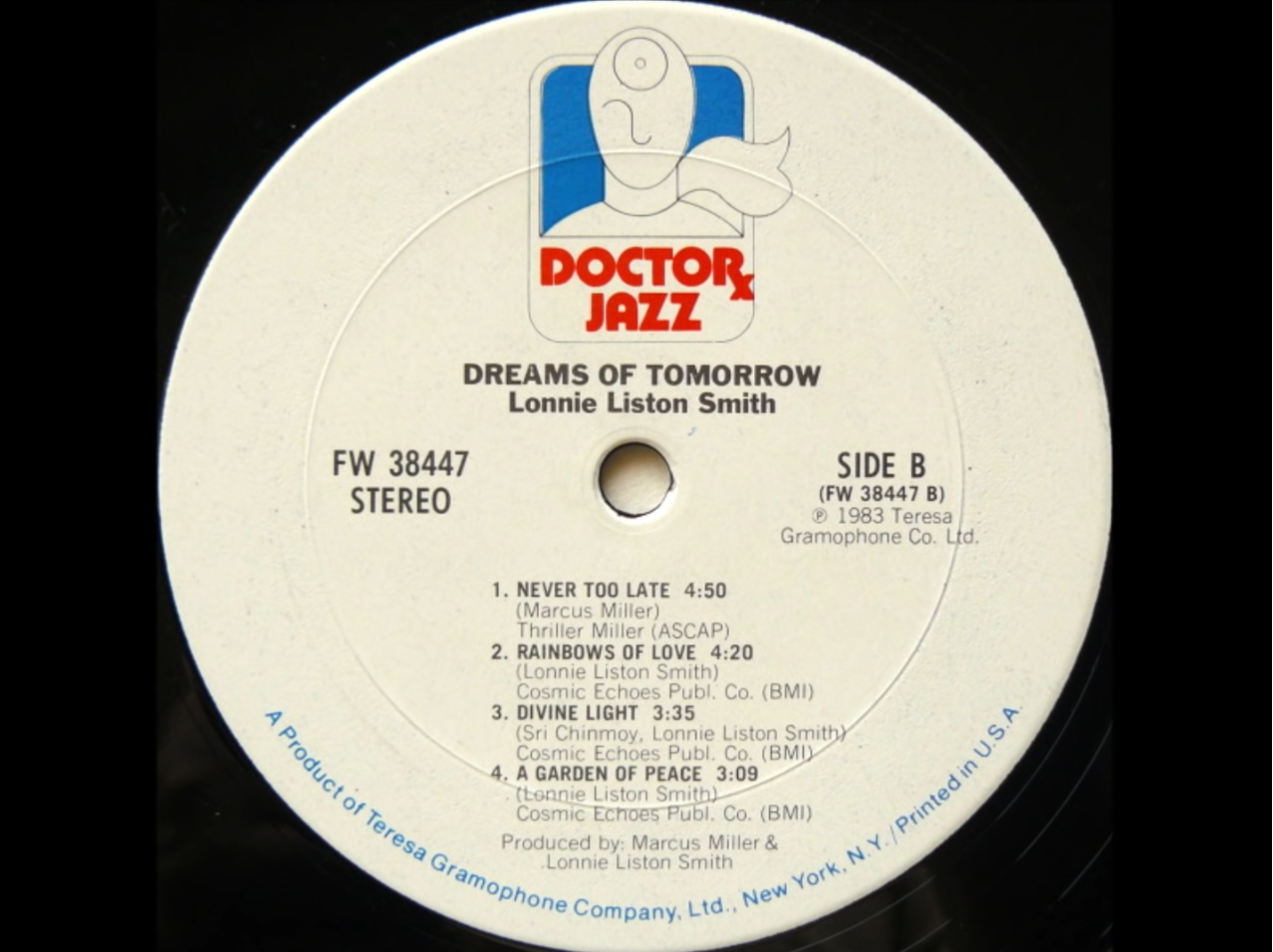This is a column about renowned samples, and let's face it: none are more notorious, or have a stranger origin, than the Incredible Bongo Band's version of Jerry Lordan's "Apache." Five years ago, Dan Forrer shot Sample This, a documentary about the Incredible Bongo Band that told the story of a band that would have already been unbelievable enough without the whole "Hip-Hop National Anthem" angle to it. I don't want to steal too much of the doc's thunder by relaying all the history behind the song myself, but suffice it to say that the path to sampling immortality ran through a mafioso turned CIA anti-Castro conspirator, the assassination of Bobby Kennedy, a chance encounter with the Manson Family, an LP "recording" of famous mime Marcel Marceau, a notoriously bad film starring NFL great Rosey Grier and Lost Weekend Oscar-winner Ray Milland, a successful forgery of Canadian Content standards, a massive payola scandal, and a bunch of session players who recorded with nearly every famous musician of the 20th century from Frank Sinatra to the Partridge Family.
It's that latter detail that resonates the most throughout the documentary -- and the recording itself. One of the open secrets about hip-hop producers' crates is that records featuring certain session players were almost always good for a break or ten, as they had even more of the same relentless work ethic that made regular funk band members like the James Brown Band's Clyde Stubblefield or the Meters' Ziggy Modeliste so choice for heavy-hitting yet immaculately timed loops. And in many ways, the story of "Apache" is the story of hip-hop's ability to bring new light to the individual components of a song -- to give a distinctly powerful musical performance its due, no matter how anonymous in origin it initially might have been.
The Original: Michael Viner's Incredible Bongo Band, "Apache" (from Bongo Rock, Pride, 1973; did not chart)
A music history that only leans on superstars and famous names is a history that is always going to stand as incomplete. And as much as documentaries like Sample This take steps towards remedying that error -- along with others like 20 Feet From Stardom and The Wrecking Crew -- we still could stand to recognize the stories of the biz-lifers that always wind up intersecting with major music history somehow. It's actually pretty funny to think about how much music these guys were involved in without being sampled by hundreds of additional artists; if anything, counting sample appearances probably bumped up most of these musicians' credits maybe 10% at most.
Bassist Jerry Scheff was a member of Elvis' '60s and '70s rhythm section, the TCB Band, for much of his '70s jumpsuit years, including the final show he played before his death. He also played the bass parts for the Doors' L.A. Woman (say what you will about those dudes, but the bassline on that title track is a monster), had a brush with Fleetwood Mac's lineage on 1973's Buckingham Nicks, played with Dylan on Street Legal, and was a preeminent utility player on Elvis Costello's King of America. Vancouver-based Robbie King, whose Hammond B3 organ served as the melodic lifeblood of "Apache," wasn't as prone to those kinds of brushes with legends, but he spent enough time pulling steady session work through the '70s and '80s that he finally hit peak CanCon paydirt contributing to Bryan Adams' Into The Fire and Waking Up The Neighbours. That stratospherically resonant surf guitar comes from Mike Deasy, whose LA hired-hand omnipresence meant his fingerprints are all over the frets of everything from the Beach Boys' Pet Sounds to Harry Nilsson's Pandemonium Shadow Show to Cannonball Adderley's The Black Messiah. And sax player Steve Douglas was a Wrecking Crew member and a regular in Phil Spector's Wall of Sound -- so integral to it, in fact, that he wound up playing not only on classics like the Crystals' "He's a Rebel" and The Ronettes' "Be My Baby," he joined Spector in the studio for the Ramones' infamous End Of The Century.
The main percussionists on "Apache" pose a strange whodunit, however. King Errison, the Nassau-born percussionist whose congas perfectly complemented those incredible bongos, is the man to credit with a significant portion of what makes that drum break legendary. But the actual drummer behind the kit is still only loosely known, since the original session featured Kat Hendrikse (best known for contributing additional drums to Heart's Dreamboat Annie) laying the grooves down in Vancouver, while super-session drummer Jim Gordon (Derek & the Dominos, Nilsson, Steely Dan, Frank Zappa) put down his own overdubbed drum track in Los Angeles. Which of the takes actually made the final recording -- Hendrikse's, Gordon's, or some combination thereof -- remains unknown, even to the other session players involved. And as far as who was actually playing the bongos? Different sources credit Errison (in an overdub), arranger Perry Botkin Jr., or Michael Viner himself -- even though, attached to the band as his name was, he was an MGM honcho that never really played instruments at all. But the whole "idea man" position's not a bad one to have.
The First Sample: Grandmaster Flash & The Furious Five, "The Adventures Of Grandmaster Flash On The Wheels Of Steel" (Sugar Hill 12", 1981; #55 Billboard R&B Singles)
If you want to have fun with semantics and don't mind looking like some kind of Music Asshole, try this one on your friends: ask them what the first commercially-released hip-hop song is. Odds are they'll answer "Rapper's Delight," or maybe Fatback Band's "King Tim III (Personality Jock)" if they're a bit savvier, or even something from Lightnin' Rod's 1973 gem Hustlers Convention. But technically those are early rap songs -- hip-hop in its original DJ-driven form, as an exhibition of turntable skills like scratching and cutting and mixing of drum breaks, didn't really get its first real moment in the record-store spotlight until Grandmaster Flash convinced Sugar Hill's Sylvia Robinson to let him put out a single of a mix/scratch routine on 12". The result, "The Adventures Of Grandmaster Flash On The Wheels Of Steel," was historic, the first real play-at-home example of the sound that had been percolating in the South Bronx since '73. Since it's 1981, the main structure of the mix gives contemporary nods to disco, new wave, rock, hip-hop, and R&B of the times -- primarily through a clever juxtaposition of Chic's "Good Times," Sugarhill Gang's "Rapper's Delight," and Queen's "Another One Bites The Dust" that's basically an exhibition of Bernard Edwards basslines and ripoffs thereof. But Flash knew he was making history, so he had to drop at least one classic break that dated back to Kool Herc's old Merry-Go-Round rotation. "Apache" gets its first real run-through here, truer to the game than Sugarhill Gang's studio-band tribute/quasi-cover, and even though it's a cameo it feels like a gauntlet's been thrown down: here's a building block, now put it in your own foundation.
The Early Sample: Hijack, "Doomsday Of Rap" (Music Of Life 12", 1988; did not chart)
There are so many old-school jams I could be giving the nod to here -- West Street Mob's "Break Dance - Electric Boogie," Double Dee & Steinski's "Lessons," Ultramagnetic MC's "MC's Ultra" -- but this cut deserves a nod in itself, in part because of just how it went about distinguishing itself from most other "Apache" breaks. Hijack had a brief flirtation with breaking UK hip-hop (or "Britcore") in the States thanks to an Ice-T cosign -- they were signed to his label Rhyme Syndicate thanks to this track's A-side, "Hold No Hostage" -- but Warner Brothers declined to release their '91 debut The Horns Of Jericho in America for whatever reason. Who knows if their intense uptempo style, complete with MC Kamanchi Sly's snarl-shout flow, would've caught on if they had better trans-Atlantic promotion; I like to think they could've at least done as well as the Stereo MCs. In any case, their production unit -- including turntablist DJ Supreme, who has a motherfucker of a scratch routine here -- struck on the brilliant idea to build not just around the break to "Apache" but the melody, which melts the organ/horn/guitar harmonics together and helps the beat make Kamanchi sound like a young LL going Super Saiyan. Liam Howlett did the world a service by putting this on The Prodigy's The Dirtchamber Sessions Volume One mix en route to detailing how much of a debt to hip-hop this supposed "rocktronica" movement actually owed.
The Breakthrough Sample: Goldie, "Inner City Life" (Metalheadz 12", 1994; #39 UK Singles)
Before the '80s were even out "Apache" was on the way to becoming thoroughly rinsed by hip-hop, and was sparsely heard if heard at all in golden age production -- it was a dozen or so BPM too fast, maybe, or just plain too embedded in notions of the Old School to still find favor with the newer generation of producers. In other words, don't expect to hear it all over your favorite Pete Rock, Premier, or DITC-helmed releases circa 1992 -- or in hip-hop at all in 1994, really. And yet it became more popular than ever as a break just by being almost exclusively (and expertly) used in hardcore techno, jungle, and drum'n'bass in the '90s, to the point where Metalheadz, one of the genre's preeminent labels, saw nearly everyone on their roster flipping it. None of them flipped it in a song as monumental as Goldie's "Inner City Life," though, the perfect cut to merge the frenetic energy of rapidfire post-rave breakbeats to a sense of where classic soul could find itself in the next millennium. In the single version, the drums don't even come in for over a whole minute, a staggering buildup that's just ambient chords and Diane Charlemagne's voice gliding frictionlessly through the speakers, and so you know that when the beat does hit, it'll cave your chest in and make you feel euphoric catharisis while it happens. The beat itself is so chopped and reconfigured that its resemblance to the groove "Apache" first laid out is incidental at best -- but those bongos couldn't come from anywhere else.
The Weirdo Sample: Nas, "Made You Look" (from God's Son, Columbia, 2002; #32 Billboard Hot 100; #9 US Hot Rap Songs)
Maybe it's blasphemous to call one of the greatest songs by one of the greatest MCs and one of the most popular-ever "Apache" flips a "Weirdo Sample," but it's also blasphemous to take the break that inspired a million b-boy/b-girl routines and slow it down to a crawl so you can't dance to it anymore. Because Salaam Remi is some kind of brilliant madman, what you can do to it is tear down buildings with your bare hands. (You know, the ones that you shoot with, count your loot with, etcetera.) Fitting for a track that solidified Nas' early '00s turn back towards the hardcore and features the quasi-nostalgic line "Rooftop like we bringin' 88 back" as a pre-chorus manifesto, this is a beat that takes a classicist mode and hauntingly shapes it for a matured if more intense present, familiar memories echoing in phantom forms -- that submerged guitar strum in itself, wafting through the negative spaces of those weather-beaten bongos, is diabolical.
The Recent Sample: Quarta330, "Resonate 3" (from Pixelated EP, Hyperdub, 2017; did not chart)
This, meanwhile, is rooftop like it's bringing '95 back -- twitch-and-glitch future bass that uses "Apache" as an ill subliminal peeking through the SNES melodies and the scattergun kicks. As the main driving force of a break, "Apache" is stark and monumental and as impossible to ignore, but as a piece of an ensemble-cast beat like this, it's a sneaky insinuation that even the most forward-thinking piece of dance music has one foot in a classic foundation.
